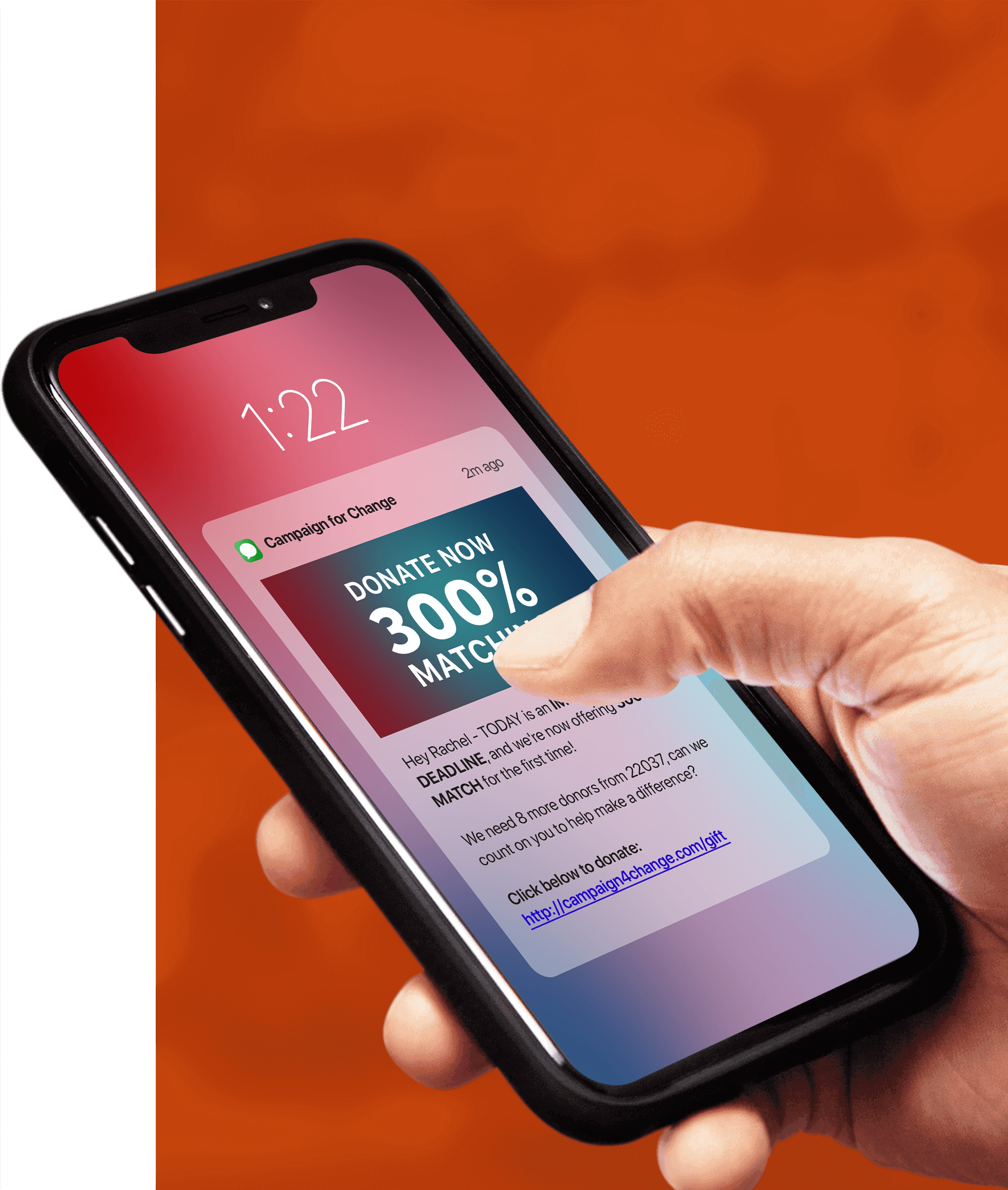
Because federal and presidential elections occur every two and four years, respectively, you have a limited shot at winning an election, so it’s crucial to get your marketing right from the start. When used correctly, text message marketing can be a powerful marketing tool to help you get more votes and win an election.
This post discusses some of the best practices for text message marketing to win an election and some don’ts you should keep in mind for your SMS marketing campaign.
Political SMS Messaging Best Practices
1. Create An Opt-In Incentive

All text message campaigns start with a subscriber list. Therefore, if you want to win an election with SMS marketing, you need to grow your subscriber list. Your first steps are to set up short code and keyword that your supporters can text to get on your subscriber list. Then, create an opt-in incentive—a reason for your supporters to opt-in. This could be to hear about important campaign updates, to receive a coupon code for campaign gear, or to get first access to insider campaign events. Use action-oriented language and be clear and direct so your subscribers know exactly how to opt-in and what they get for doing so.
2. Follow the Rules and Regulations of the FEC and TCPA
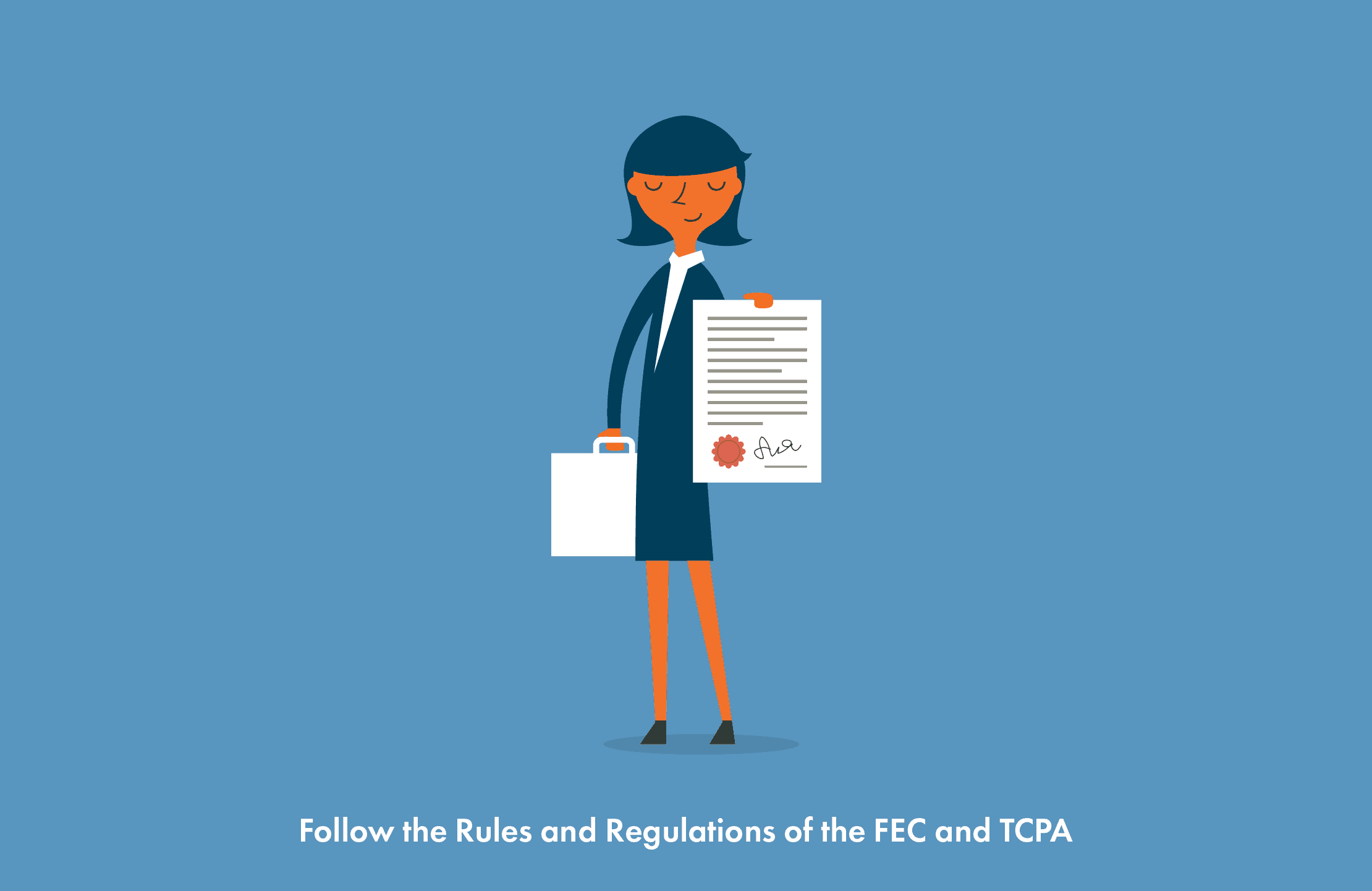
A successful text message marketing campaign is a compliant text message marketing campaign. If you don’t want to be fined for violating the TCPA, you must ensure you comply with text message marketing regulations for political candidates or committees. Some rules include obtaining consent via an opt-in, using only one short code for your entire campaign, collecting funds only from Americans, and registering with the FEC and relevant state authorities. To see all the guidelines, check out the FEC and TCPA websites.
3. Provide a Method to Opt Out

All SMS marketing campaigns must include an opt-out method for subscribers who no longer want to be on your list. You can provide this through a link included in the messages or through the standard instructions, “ Text STOP to opt out.” Each message you send must include an opt-out method, similar to the “unsubscribe” link required in the footer of all email marketing messages.
4. Include Your Organization’s Name in All Texts
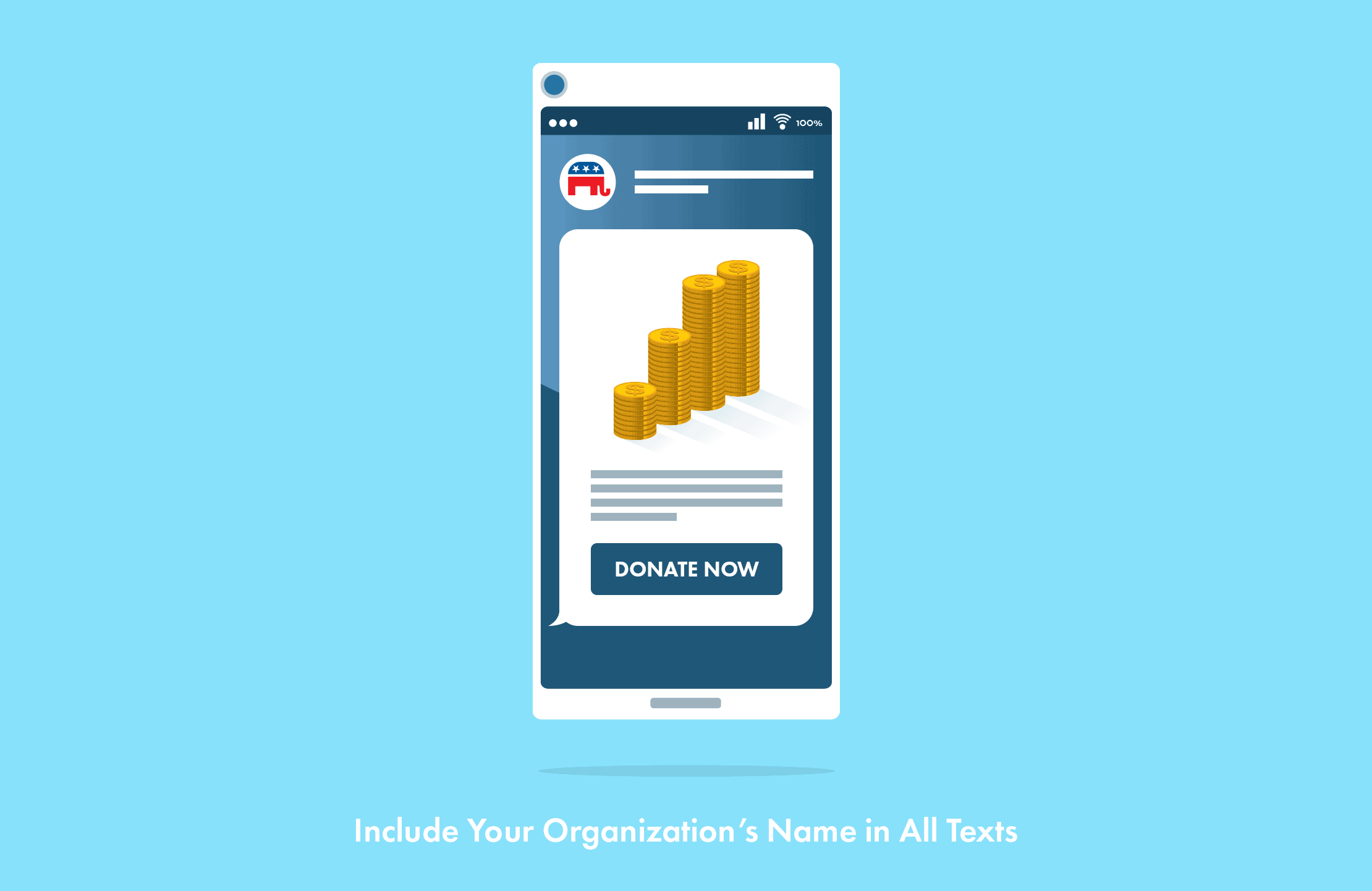
Including your name in the text messages makes it easy for supporters to know who’s sending them a text. Familiarity with an organization can increase open rates. This is especially important when you’re sending “get out the vote” (GOTV) texts or political donation requests. The last thing you want is for supporters to ignore your request because they don’t recognize the sender.
5. Collect Voter Data and Segment Your List

To maximize your marketing campaign’s effectiveness, collecting voter information is a must. Names, zip codes, and email addresses are useful if you want to segment your list to send targeted messages with tailored calls to action (CTAs). For example, if you need volunteers for door-to-door canvassing in Baltimore, it doesn’t make sense to send a call for volunteers to your entire subscriber list. Using zip code information, you can segment your list and message only the supporters who live in Baltimore. Fortunately, Tatango political text messaging software makes segmenting a breeze.
6. Write Compelling Text Messages

A text message marketing campaign should inspire subscribers to take action. In your case, those actions include donating to your campaign and voting for your candidate. Every message counts. When crafting your texts, include your subscriber’s name, keep the message brief, use the right tone, and end the message with a strong CTA. Remember, you also have MMS in your toolbox. Use MMS when you want to send a longer message or want to include images, video, gifs, or even sound files. These multimedia messages can invoke a powerful response from your audience and help you develop a relationship with your subscribers.
7. Determine the Right Frequency

Send too few texts, and your campaign may not get your message across effectively. Send too many texts, and you risk annoying your subscribers. The key is to find the sweet spot where you send just enough messages to keep your subscribers engaged and interested without making them feel like you’re spamming them. Plan your marketing campaign to create an overview of the entire campaign. Map out the messages you’ll be sending and determine the frequency for messaging your subscribers. Creating a schedule will allow you to see early on whether your campaign will come off as spammy. Once you’ve decided how often you’ll send text messages, monitor your analytics to see if this strategy is working and make changes when necessary.
8. Track and Analyze Your Campaign Performance

Without analytics, you won’t know how effective your marketing campaign is. Tracking your campaign’s performance is essential. Look at metrics such as open rates, click-through rates, unsubscribes, and political donations received through texts. These metrics will tell you if your messaging is effective and whether your subscribers find your messages valuable and relevant. Based on your analysis, you can make changes to your marketing strategy to improve results.
9. Set Up a Donation Platform and Collect Donations
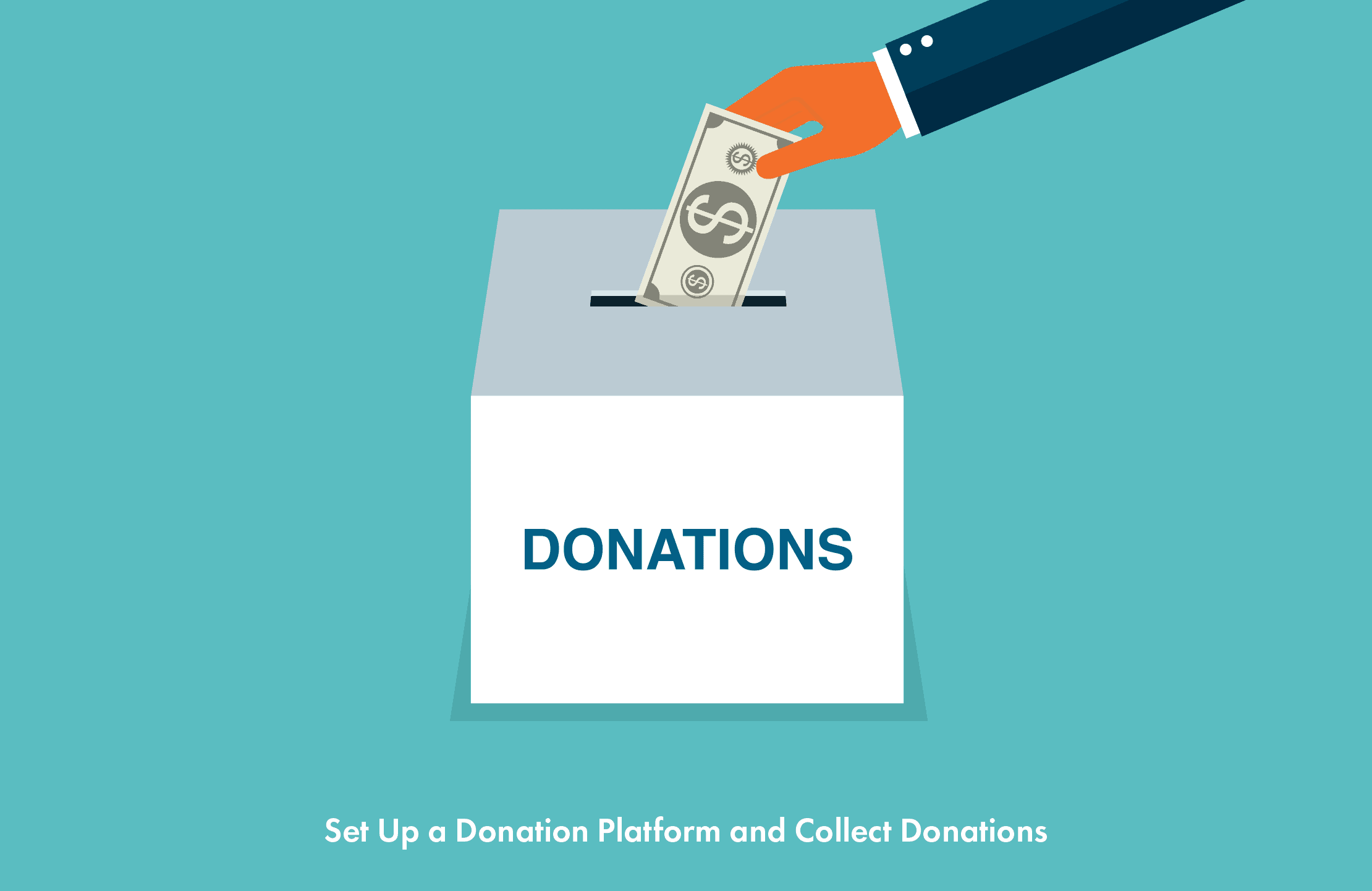
Campaigning for an election is costly. Collecting donations helps ensure that you get enough funding to campaign. The best way to raise money is to integrate the donation platform of your choice with your text message marketing software. This type of integration will allow you to collect donations effortlessly by sending a link with your donation request messages. SMS fundraising is an easy and secure way for your donors to support you and even makes it possible for them to set up recurring donations.
10. Send Voting Reminders and Info
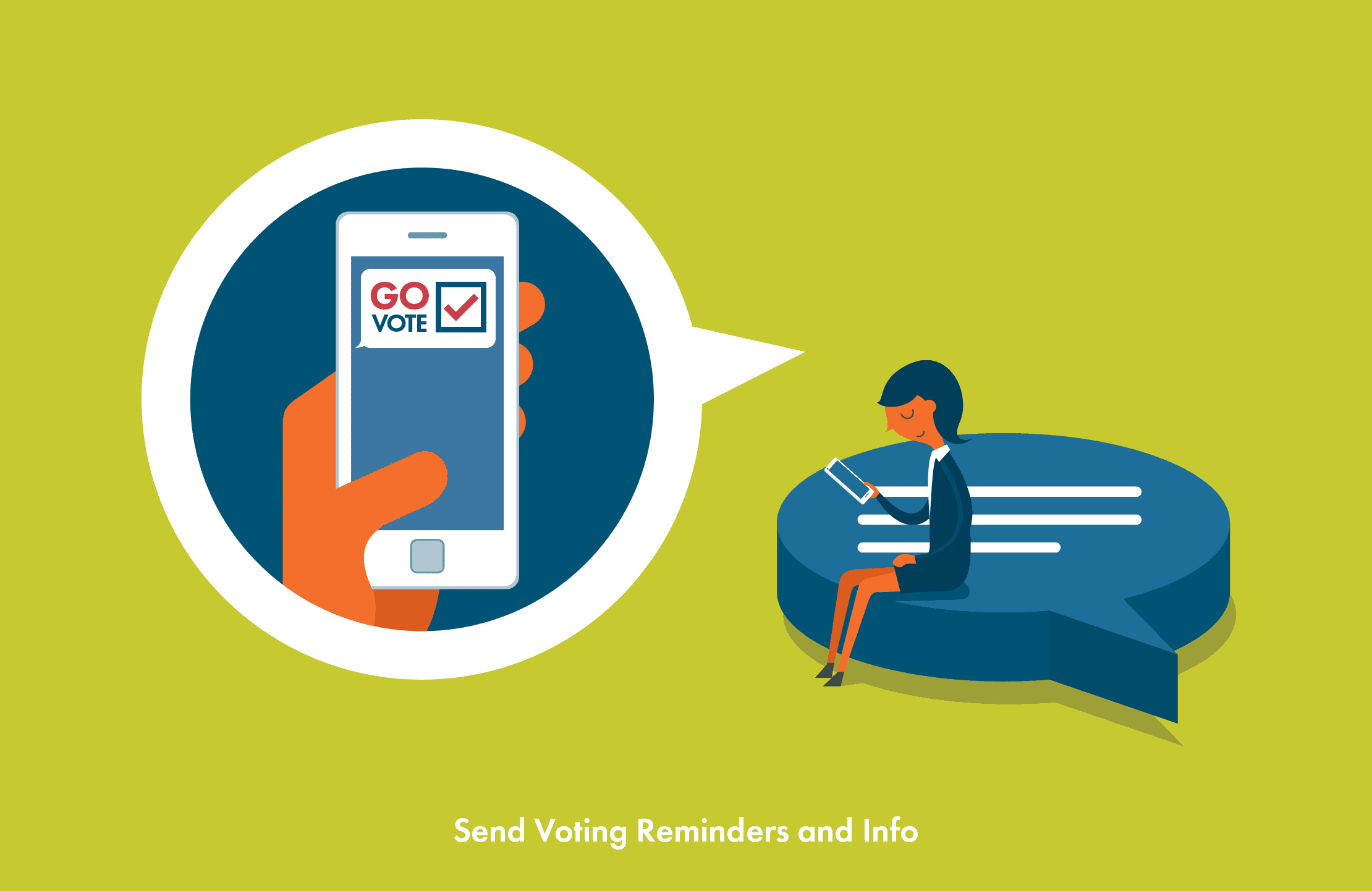
Use text messages to encourage your supporters to vote by sending reminders about registration deadlines and election day. The more supporters you can persuade to vote, the closer you’ll be to securing a win.
11. Promote Your Keyword and Short Code Everywhere

Setting up your keyword and short code is only the first part of the process. To grow a large subscriber list, you need to promote your opt-in. Getting more people to see your opt-in can help increase the number of subscribers on your list, so make sure it’s everywhere. Include it on your website, social media posts, and profiles, and all the flyers and materials your campaign distributes.
12. Monitor Your Notifications
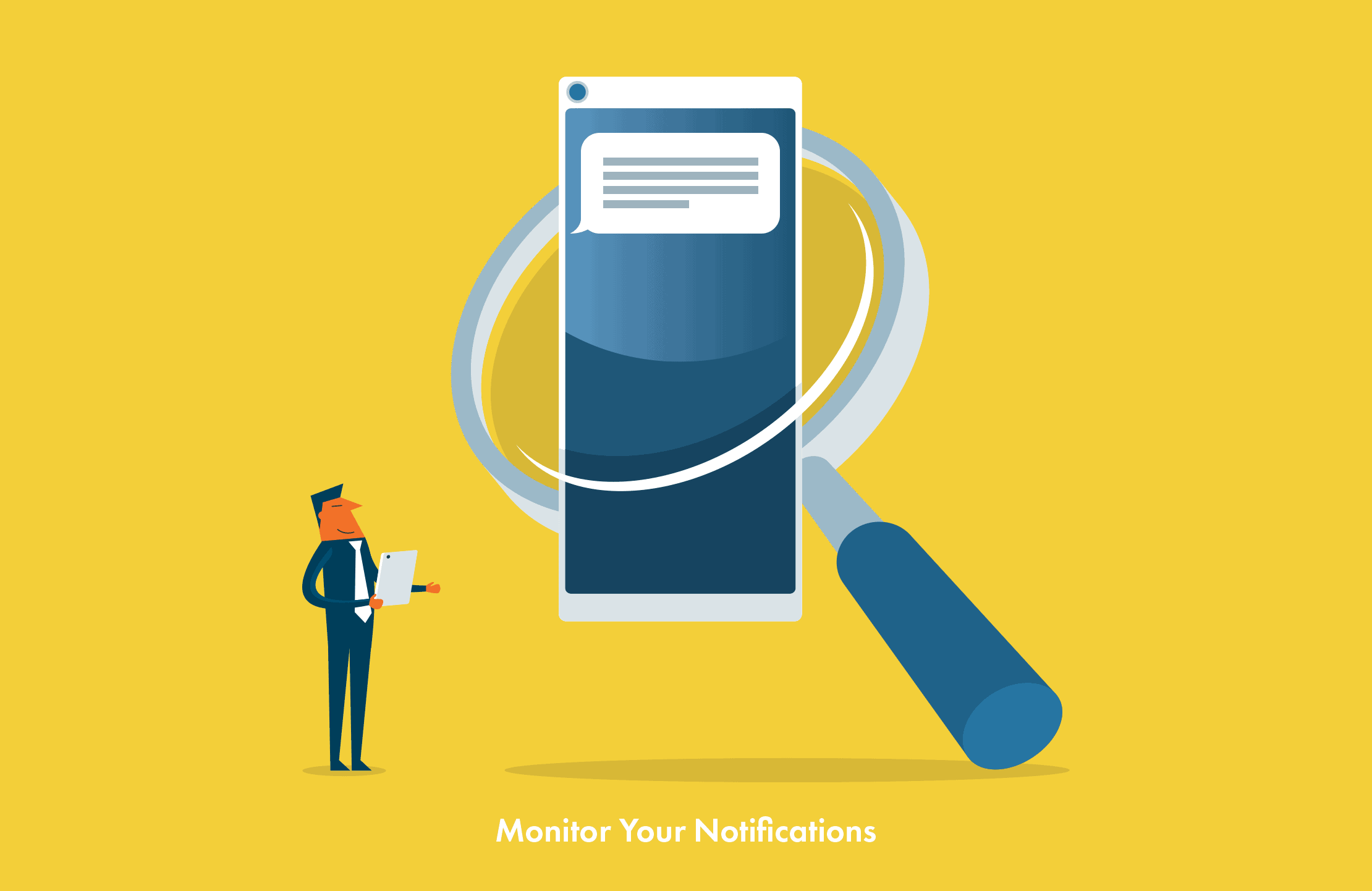
Text messaging is a two-way street. Make sure you or someone on your staff can monitor notifications and respond to questions from your supporters. A highly responsive team will build trust and a great reputation with supporters by making them feel heard and valued.
4 Text Message Marketing Don’ts
Now that you know what the best practices are for text message marketing to win an election, let’s look at some practices you should avoid.
1. Don’t Send Messages at Inappropriate Times
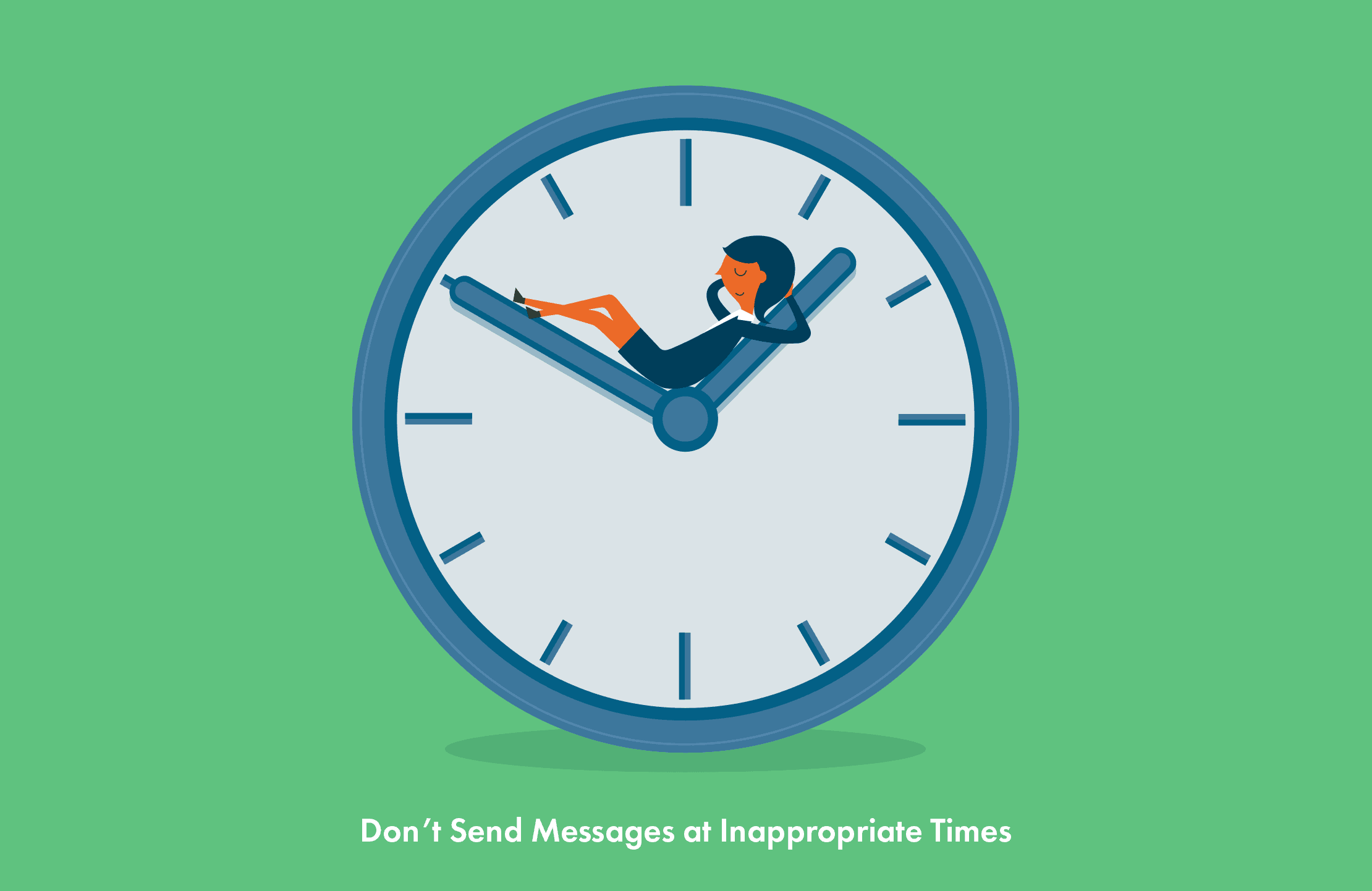
The fastest way to get supporters to unsubscribe is to send messages at the wrong time. Nobody wants to receive a text message in the middle of the night. Be mindful of not only your local time but also your subscribers’ time zones. To get an idea of what the best time is to message your list, monitor your open rates, and unsubscribes. As a rule of thumb, avoid sending messages after 8 p.m.
2. Don’t Send Too Many Messages
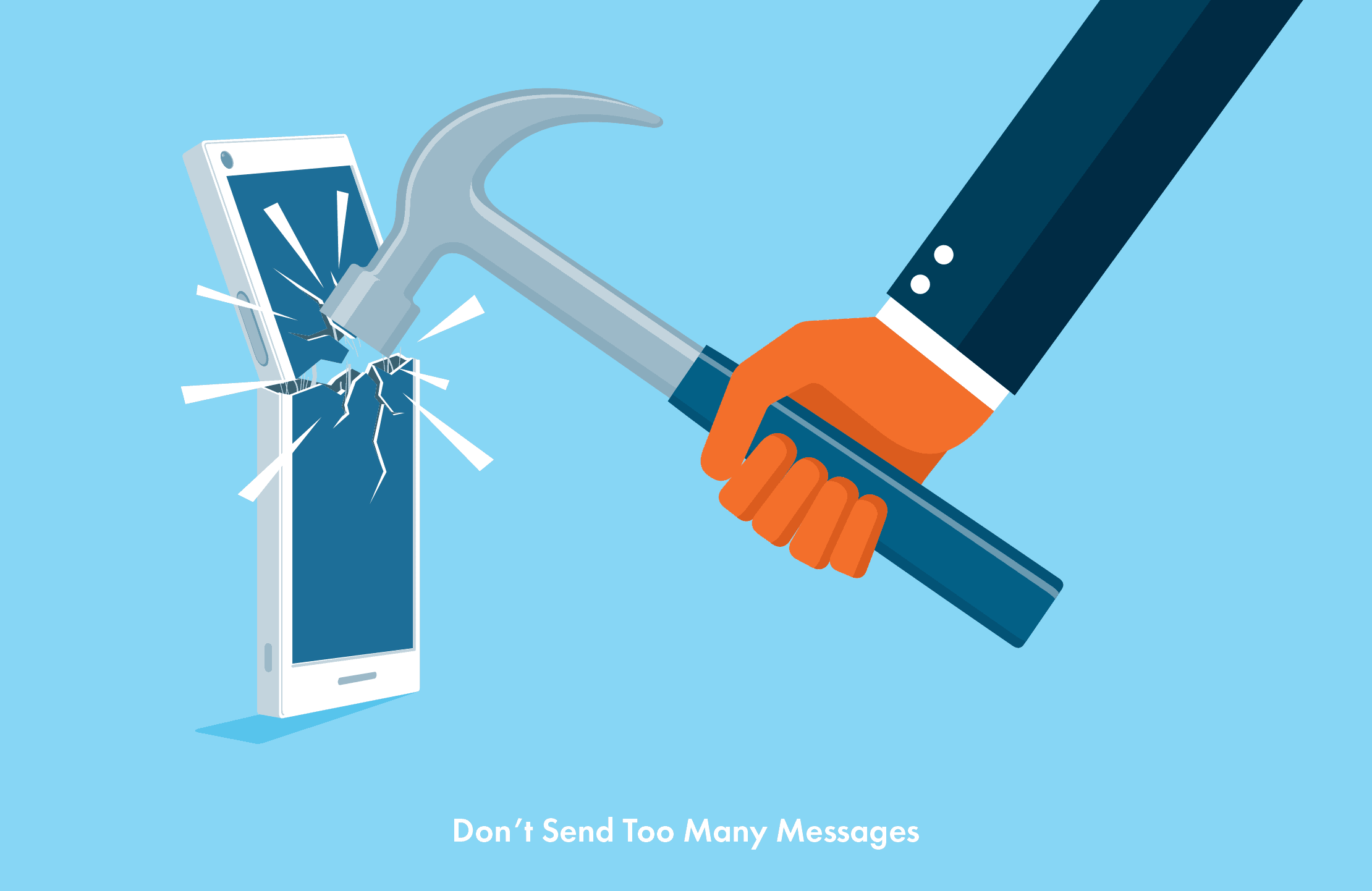
As is often the case with email marketing, sending too many messages will frustrate and annoy your subscribers, and they may unsubscribe. To avoid this scenario, track your unsubscribes to see how many people you’re losing. If a substantial number of subscribers are opting out, you may need to review your marketing campaign to see make sure you’re not overwhelming supporters with too many texts.
3. Don’t Text Like a Teenager

Text messaging can be tricky. You have a limited number of characters to work with, and it may be tempting to use abbreviations popular among teens. Be careful. Doing so may make you and your campaign look unprofessional, and the point of your text may be lost if readers can’t figure out what you’re trying to say. If character limits are too restrictive for a particular message, consider using MMS or sending a video instead.
4. Don’t Be Irrelevant

Respect your subscribers’ time. For example, sending texts to your subscribers in Washington, D.C with a call for volunteers needed in San Diego will most definitely waste your D.C subscribers’ time and likely annoy them. Use subscriber information to segment your list so you can ensure you’ll always send subscribers relevant messages.
Win Your Next Election With Tatango
Follow these do’s and don’ts of text messaging to win an election, and you’ll be off to a great start. And if you need some help getting your text messaging campaign off the ground, our dedicated political campaign experts will work with you to ensure you have an appropriate short code, and the right keywords, and most importantly, that you’re compliant with all laws and regulations. Schedule a time to talk to a dedicated SMS marketing consultant today.

